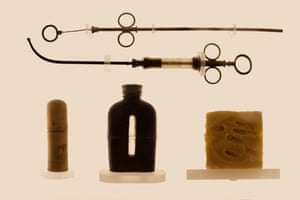Women in the garment industry – away from their homes and support networks – are inhibited from accessing healthcare, including abortion services
Marta Kasztelan in Phnom Penh
@MartaKaszti
Wednesday 13 July 2016 07.00 BST
Sopheak, a young woman employed at one of Cambodia’s many garment factories, is sitting on her bed, crying. She has just learned she is pregnant – and her boyfriend left her the minute he heard the news.
“No boyfriend, no husband, no money, nothing but a baby coming,” she laments as her friends try to console her. She is adamant she’ll go “to one of those secret places, where they can take the baby out”. Looking up at her friends, she adds: “I should have never told you.”
While this scene is from a video series produced by the NGO Care, the drama that unfolds on screen is a reality for many Cambodian garment workers.
The garment industry is the linchpin of Cambodia’s economy, and the single biggest employer of women. Some 500 factories hire almost 500,000 female workers, many of whom are young and have migrated to the city from the countryside.
Away from their homes and support networks, and with low levels of education and income, these women are particularly vulnerable (pdf) and may be inhibited from accessing healthcare information and services, including abortion, according to the UN population fund, UNFPA.
Although Cambodian law allows women to terminate a pregnancy up to 12 weeks, studies suggest that many garment workers are not aware the procedure is legal. As a result, they do not know how to access safe abortion services and predominantly choose expensive and potentially unsafe services from the private sector.
A 2014 survey (pdf) published by Partnering to Save Lives – a collaboration of three NGOs – found more than 90% of women working in garment factories didn’t know abortion was legal. It also found that out of 900 garment workers interviewed for the study, 18% said they had had an abortion. The national average at the time (pdf) was 5%. Almost 75% of women couldn’t indicate where to seek a safe abortion.
Dr Chok Chanda, a manager of 13 years at a small Phnom Penh clinic run by Reproductive Health Association of Cambodia, a non-profit, admits she has treated many patients, including garment workers, who went to “unsafe places”.
“Most patients with post-abortion complications visiting the clinic have incomplete abortions, from incorrectly taking the medical abortion pill or the Chinese pill – a traditional medication,” she says. “They buy the pill at the pharmacy and take it at home but they don’t know how to use it – that they need to take it twice and come for a medical check-up.”
Many women, Chanda says, go to private clinics, some of which are unlicensed or charge high fees, or to pharmacies, because they don’t know where to seek abortion services or because these facilities are closer to where they work.
Women who are unmarried – the notion of pre-marital sex is still frowned upon – Chanda says, choose to travel long distances to terminate their pregnancy to avoid the shame. “They go to unsafe places, and afterwards they come to us with complications,” she says.
In 2008, the World Health Organisation estimated that each year unsafe abortions account for 47,000 deaths globally and leave millions of women temporarily or permanently disabled.
Julia Battle, the sexual reproductive maternal health and rights adviser at Care, acknowledges that “there is a lot of confusion around abortion”. This is one of the reasons why, she says, her organisation trains female garment workers in 16 factories in the capital and in Kandal province to raise awareness about sexual and reproductive rights.
Aside from screening an educational mini-drama series, which can be shared on smartphones and has been well received by workers, according to Battle, the training sessions “move from discussion of sex, modern contraception and emergency contraception to safe abortion”.
There is evidence the training is raising the level of knowledge at the factories – the mid-term review (pdf) this year showed that almost 45% of workers knew at least one place where to obtain safe abortion, compared with 27% two years ago (pdf).
However, with the number of factories in the country, Battle acknowledges that many women are likely to fall through the cracks. “There are hundreds of factories. I do think that those we are not reaching probably are less aware of how to prevent unplanned pregnancy and how and where to access safe abortion,” she says.
Asked what the government was doing to facilitate access to safe abortion, a ministry of health spokesperson referred the Guardian to Professor Tung Rathavy, director of the National Maternal and Child Health Centre, who declined to comment.
Source: The Guardian








